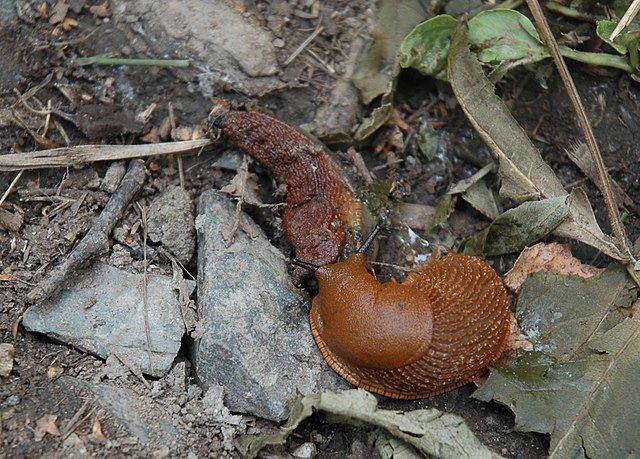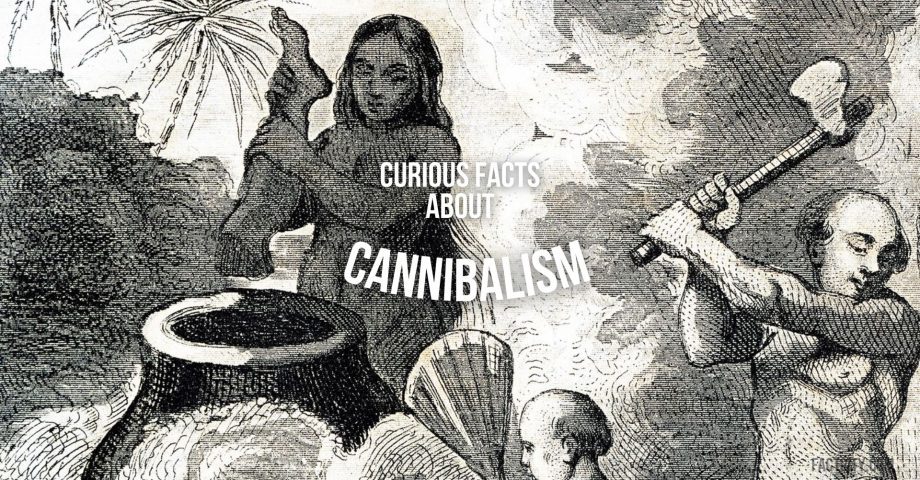Well, I hope you’re not eating anything, because this fact file is going to be a little… gross.
In case you don’t know what cannibalism is, it is the act of one member of a species eating another member of the same species. It’s widely used to describe humans eating human flesh.
As you can imagine, it is a very difficult subject for people and is condemned as a criminal act in most areas. However, it is important to remember that in some societies, cannibalism was practiced for cultural reasons. That is what makes it such a taboo subject! Here are some interesting facts about cannibalism…
1. Cannibalism is nothing new.
When most of us think of cannibalism, we think of horror films, TV shows, and books describing shocking cannibalistic events. However, cannibalism is nothing new! Various cultures have long practiced it throughout history, usually for ritualistic or survival reasons. In fact, archaeological evidence has shown instances of cannibalism even in ancient human populations, such as the Neanderthals!
2. Cannibalism can be linked to survival.
Indeed, in certain extreme situations, individuals have resorted to cannibalism as a means of survival. For example, in areas of famine or people lost on stranded expeditions etc. Cannibalism becomes a last resort for survival.
3. There are multiple kinds of cannibalism.
While the term “cannibalism” is very broad, there are different kinds of cannibalism, such as endocannibalism and exocannibalism. Endocannibalism involves consuming the flesh of members of one’s own group. On the other hand, exocannibalism involves eating the flesh of individuals outside one’s own group.
4. Cannibalism has also been linked to spirituality.
In some cultures throughout history, cannibalism was performed in rituals. For those societies, it was considered religious and had important spiritual significance. For example, the Māori people of New Zealand historically practiced a form of cannibalism known as “moko,” which was part of tribal warfare rituals.
5. It has also been used as a sign of respect.
Believe it or not, cannibalism has also historically been performed as a sign of respect. For example, the Wari people in the Amazon rainforest engaged in endocannibalism. They consumed the remains of deceased relatives as a sign of respect and mourning.
6. Not all reports of cannibalism were true!
Since the victors tell history, you can imagine that not all reports of cannibalism were accurate! Some of the famous reports of cannibalism are believed to have been exaggerated or even fabricated by European explorers as a form of sensationalism or to demonize indigenous populations.
7. It has led to diseases spreading.
The Fore people of Papua New Guinea were affected by a condition called “kuru,” a prion disease transmitted through cannibalism. It led to neurological degeneration and death. The Fore people ate their dead as a means of freeing the spirit of the deceased.
8. It remains illegal across the world.
Generally speaking, cannibalism is very much condemned in contemporary society, and in most countries, it is illegal. Legal consequences can include charges of murder, desecration of a corpse, or other related crimes.
9. There are many cases of it in pop culture.
Cannibalism is a relatively common theme in litreature, art, and popular culture, often depicted as a taboo or horror element. It can be found in books such as Moby Dick, The Silence of the Lambs, and more. More recently, the theme was key in the film Fresh, starring Daisy Edgar-Jones and Sebastian Stan.
10. Cannibalism is also present in animal behaviour.
Cannibalism is not something that only occurs between humans. In fact, it has been observed in various animal species, including insects, mammals, and birds, for reasons such as territory disputes, scarcity of resources, or even maternal behaviour!

FAQs about Cannibalism
What is the difference between cannibalism and anthropophagy?
Generally speaking, cannibalism can refer to any species eating their own. However, anthropophagy refers mainly to humans eating other humans.
Does cannibalism affect the brain?
Cannibalism has a long list of issues that come with it, in some cases including neurological issues. For example, kuru was a disease caused by cannibalism.
Does kuru still exist?
Thankfully, no, kuru is no longer an issue. The last recorded case of it was in 2005.
Further reading
https://www.anthroencyclopedia.com/entry/cannibalism
https://www.haaretz.com/archaeology/2022-12-14/ty-article/a-brief-history-of-cannibalism-not-just-a-matter-of-taste/00000185-10a9-dfac-ad97-ddab6a170000
Do you know any interesting facts about cannibalism? Share them in the comments section below!









